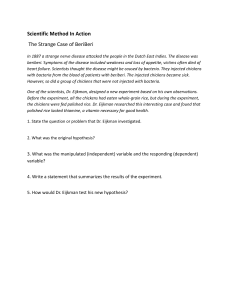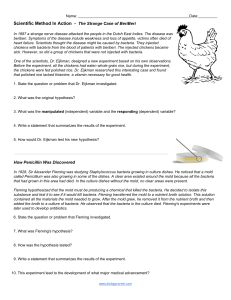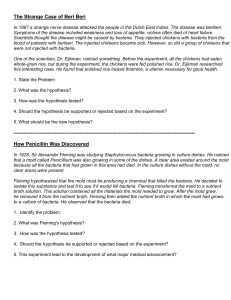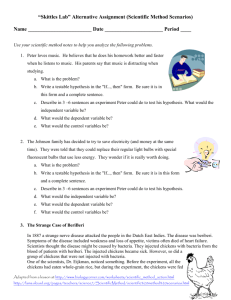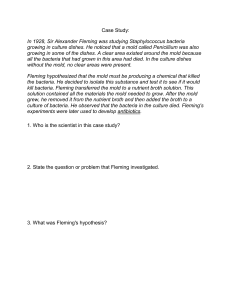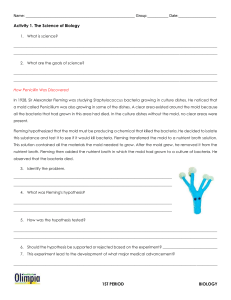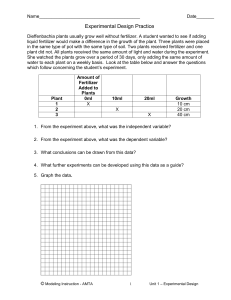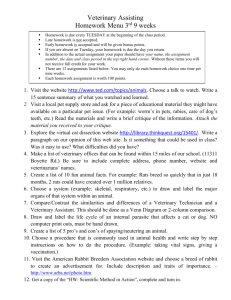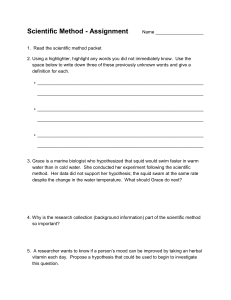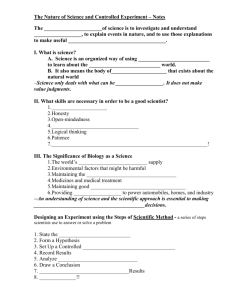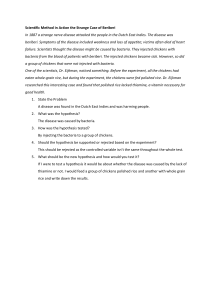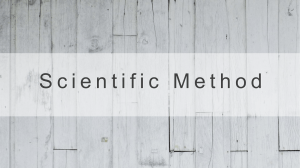How Penicillin Was Discovered
advertisement
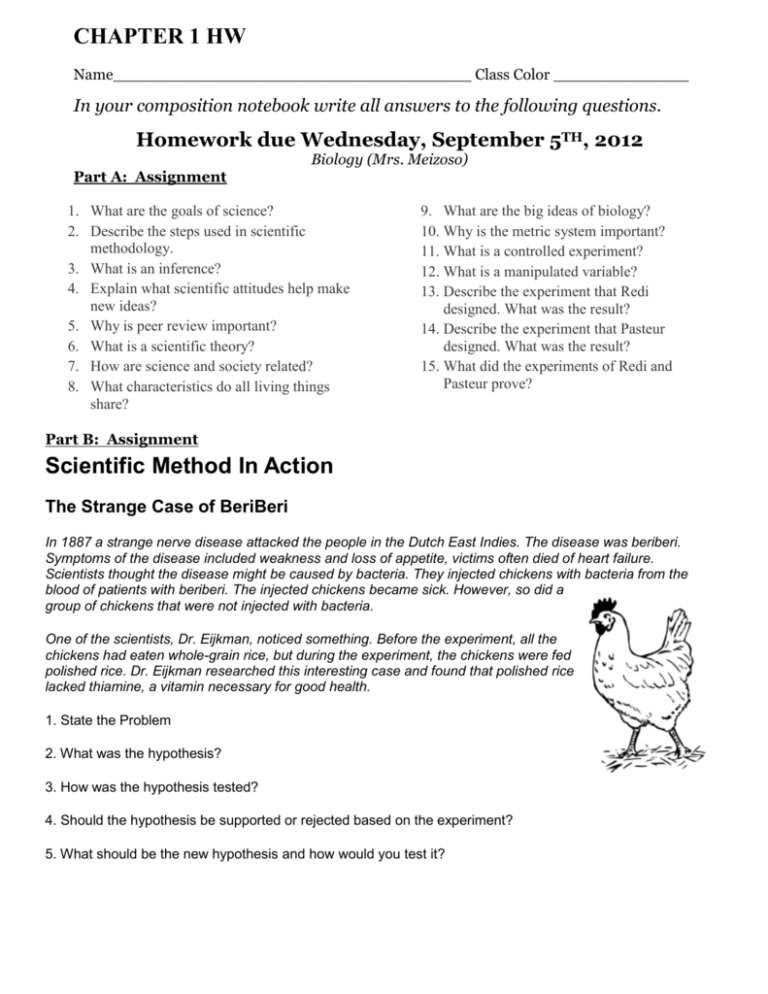
CHAPTER 1 HW Name_____________________________________ Class Color ______________ In your composition notebook write all answers to the following questions. Homework due Wednesday, September 5TH, 2012 Biology (Mrs. Meizoso) Part A: Assignment 1. What are the goals of science? 2. Describe the steps used in scientific methodology. 3. What is an inference? 4. Explain what scientific attitudes help make new ideas? 5. Why is peer review important? 6. What is a scientific theory? 7. How are science and society related? 8. What characteristics do all living things share? 9. What are the big ideas of biology? 10. Why is the metric system important? 11. What is a controlled experiment? 12. What is a manipulated variable? 13. Describe the experiment that Redi designed. What was the result? 14. Describe the experiment that Pasteur designed. What was the result? 15. What did the experiments of Redi and Pasteur prove? Part B: Assignment Scientific Method In Action The Strange Case of BeriBeri In 1887 a strange nerve disease attacked the people in the Dutch East Indies. The disease was beriberi. Symptoms of the disease included weakness and loss of appetite, victims often died of heart failure. Scientists thought the disease might be caused by bacteria. They injected chickens with bacteria from the blood of patients with beriberi. The injected chickens became sick. However, so did a group of chickens that were not injected with bacteria. One of the scientists, Dr. Eijkman, noticed something. Before the experiment, all the chickens had eaten whole-grain rice, but during the experiment, the chickens were fed polished rice. Dr. Eijkman researched this interesting case and found that polished rice lacked thiamine, a vitamin necessary for good health. 1. State the Problem 2. What was the hypothesis? 3. How was the hypothesis tested? 4. Should the hypothesis be supported or rejected based on the experiment? 5. What should be the new hypothesis and how would you test it? How Penicillin Was Discovered In 1928, Sir Alexander Fleming was studying Staphylococcus bacteria growing in culture dishes. He noticed that a mold called Penicillium was also growing in some of the dishes. A clear area existed around the mold because all the bacteria that had grown in this area had died. In the culture dishes without the mold, no clear areas were present. Fleming hypothesized that the mold must be producing a chemical that killed the bacteria. He decided to isolate this substance and test it to see if it would kill bacteria. Fleming transferred the mold to a nutrient broth solution. This solution contained all the materials the mold needed to grow. After the mold grew, he removed it from the nutrient broth. Fleming then added the nutrient broth in which the mold had grown to a culture of bacteria. He observed that the bacteria died which was later used to develop antibiotics used to treat a variety of diseases. 6. Identify the problem. 7. What was Fleming's hypothesis? 8. How was the hypothesis tested? 9. Should the hypothesis be supported or rejected based on the experiment? 10. This experiment leads to the development of what major medical advancement? Part C: Assignment Define the following Vocabulary words in your composition book 1. 2. 3. 4. 5. 6. 7. 8. 9. Science Observation Hypothesis Controlled experiment Control group Data Theory Bias Variable 10. 11. 12. 13. 14. 15. 16. 17. dependent Independent variable Dependent variable Biology Homeostasis DNA Stimulus Metabolism 18. 19. 20. 21. 22. Biosphere Law Spontaneous generation Cell Evolve Part D: Assignment TEXTBOOK Textbook assignment done in your composition book: Check understanding pg. 23-24 Section 1-1: Questions 1-3 & 5; Section 1-2: Questions 6-8 Section 1-3: Questions 12 & 13 Part E: Assignment WORKBOOK Workbook Assignment: Pg. 12 (1-17) PG. 13-14 (1-5) QUIZ DATE: __Wednesday, September 5TH, 2012__
